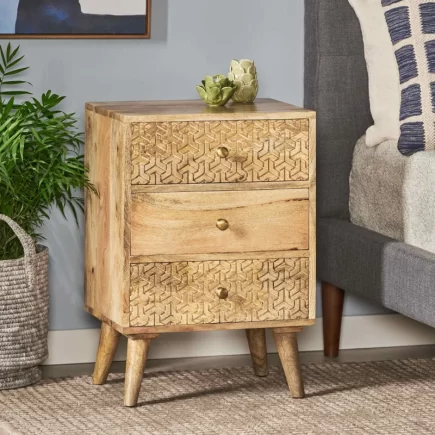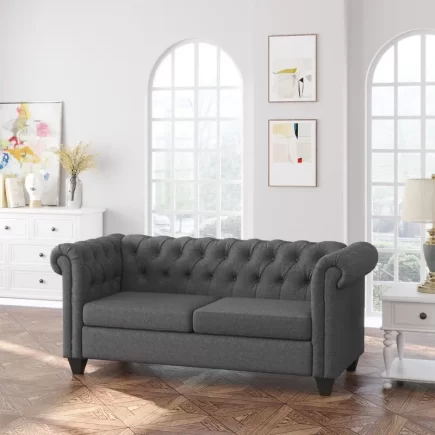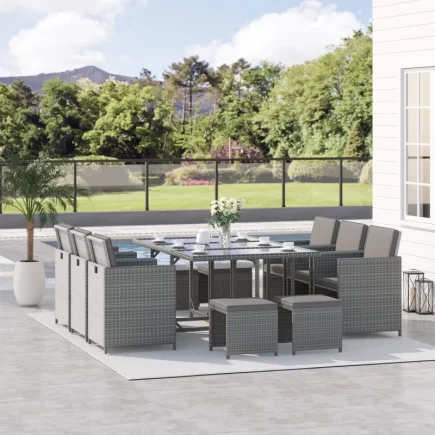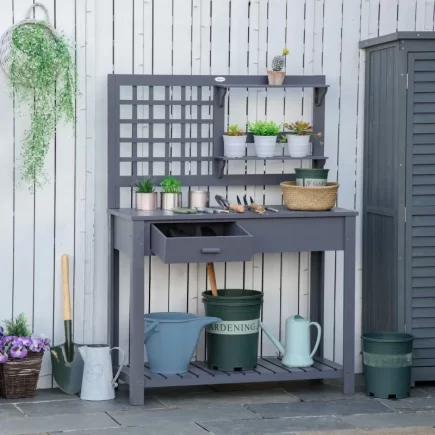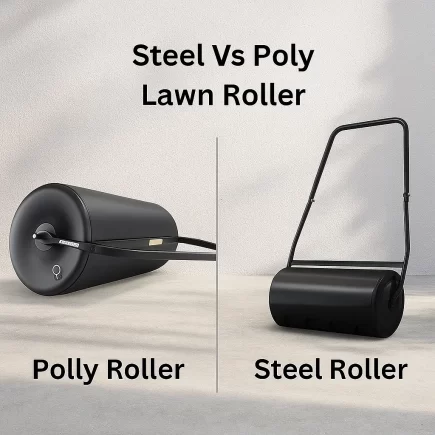
You’ve found the perfect recliner online. The style is just right, the upholstery looks luxurious, and it promises next-level comfort. But here’s the question: Will it fit? For too many buyers, this is the last question they ask and the first problem they face after delivery.
From tight corners during setup to awkward layout disruptions and sore backs due to poor ergonomic fit, a recliner that isn’t measured properly can turn a dream purchase into a frustrating ordeal. Whether you’re a first-time buyer, home renovator, or caring for someone with mobility needs, this guide is for you.
Tools You’ll Need Before You Start
Before you take your first measurement, gather the following:
- Rigid tape measure: Offers precision over flexible fabric types
- Notepad or phone: To record your measurements
- A helper: Especially helpful for larger chairs or if you’re measuring someone else
Pro Tip: Wear everyday footwear while measuring what you typically wear while using the recliner.
Tips on Measuring a Recliner for Your Space
1. Measure Your Floor Space First

Before you dive into choosing a recliner, it’s crucial to assess the available space. Taking the time to measure your floor area ensures you select a recliner that fits perfectly within your room’s layout, preventing awkward arrangements or overcrowding. Here’s how to get started:
Mark Your Ideal Recliner Space
- Start by measuring the floor space where you envision placing the recliner. This gives you a clear visual reference and helps with planning how the recliner will work with your existing furniture.
- For a traditional recliner, aim to mark out a space approximately the size of the recliner itself, ensuring you have enough room for both the chair and its motion.
- For wall-hugger models, you can reduce the depth, but remember, space on all sides is still essential for comfort and functionality.
Leave Breathing Room on the Sides
Allow for at least 2–4 inches of space on each side of the recliner. This breathing room prevents the recliner from being too cramped in the corner and ensures the chair doesn’t feel constricted when reclining.
Wall Clearance (for Non-Wall-Hugger Recliners)
- If you’re not going with a wall-hugger model (which needs less space to recline), make sure to leave 12–18 inches behind the recliner. This is necessary for the chair to recline comfortably without hitting the wall.
- Wall-hugger recliners are designed to move forward as they recline, reducing the need for additional space behind them. Non-wall-huggers, however, will require more clearance so that the back of the recliner doesn’t press against the wall when extended.
Space in Front of the Recliner
- Allow for at least 30–36 inches of open space in front of the recliner. This is necessary for the footrest to fully extend and provides ample space for you to get up and down without obstruction.
2. Measure the Recliner (Upright and Reclined)

Use the recliner’s product page or physically measure these dimensions if you already own the chair or are shopping in person.
Overall Width
The total width of the recliner is from the outside edge of one armrest to the outside edge of the other. This dimension tells you how much horizontal space the recliner will occupy in your room. It also affects whether the chair fits through doorways and can accommodate slipcovers.
Seat Width
The usable space between the inner edges of the armrests is where you actually sit. This dimension determines comfort and posture. A seat that’s too narrow feels tight, while one that’s too wide may reduce armrest support.
How to measure recliner seat width:
- Measure from the inner edge of one armrest to the inner edge of the opposite armrest.
- Measure the front half of the seat where you would typically sit.
Seat Depth
The front-to-back depth of the seating area, from the front edge of the seat to the beginning of the backrest. This measurement affects upper-leg support. If the seat is too deep, users may slouch or have poor back contact; if too shallow, their thighs won’t be supported properly.
How to measure recliner seat depth:
- Place the tape measure at the front edge of the seat cushion.
- Extend it back to the point where the cushion meets the backrest.
- Keep the tape measure straight and level.
Seat Height
The vertical distance from the floor to the top of the seat cushion (when compressed with a user’s weight, if possible). Ensures the user’s feet rest flat on the floor. Too high, and their legs dangle; too low, and standing up becomes difficult.
How to measure recliner seat height:
- Use a rigid tape measure.
- Place the end of the tape on the floor, right in front of the recliner.
- Extend it vertically to the top surface of the seat cushion (where the user’s hips would rest).
Adjustment Tip: For better accuracy, have someone sit on the recliner during measurement, as the cushion compresses under weight.
Backrest Height
The distance from the seat cushion to the top of the recliner’s backrest. This affects head and neck support, especially for taller users or those who want full recline comfort.
How to measure recliner backrest height:
- Start from the seat cushion (where it meets the backrest).
- Extend the tape straight upward to the highest point of the backrest.
- For accuracy, make sure the tape follows the curve of the back if the backrest is contoured.
Armrest Height
The vertical distance from the seat cushion to the top of the armrest. Proper armrest height supports the elbows and helps users push off the chair to stand. Too low causes drooping shoulders; too high causes shoulder strain.
How to measure recliner armrest height:
- Sit or imagine a seated position on the chair.
- Place the tape at the top of the seat cushion, directly beneath the armrest.
- Extend the tape straight up to the top of the armrest.
Fully Reclined Length

The total length of the recliner is fully extended from the top of the headrest to the farthest point on the footrest. This is the maximum footprint of the recliner when in use and is crucial for room layout and wall clearance planning.
How to measure:
- Fully extend the recliner into its open, lying-down position.
- Start at the topmost point of the headrest.
- Run the tape measure straight across to the far edge of the footrest.
- Note this number as the full extension length.
3. Allow for Easy Movement and Access

When planning for your recliner, it’s not just about fitting it into the available space; you need to ensure there’s enough room for movement around it. Make sure there’s plenty of space to move freely when the recliner is both upright and reclined. When the chair is reclined, make sure:
- You have 30–36 inches of clearance for walkways, allowing easy access around the recliner.
- There’s enough distance between the recliner and your coffee table to avoid bumping your knees or blocking the footrest.
This extra space will help prevent annoying scuff marks, stubbed toes, and that awkward shuffle when getting up.
4. Measure Doorways and Access Points
You’ve done the measuring for your recliner’s space, but now make sure it can fit into your home! Here’s how to avoid any mishaps:
Measure Entryways and Door frames
Check the width and height of your main doors to ensure the recliner will fit through. Don’t forget to measure the doorframe too.
Elevators or Staircases
If you live in an apartment, measure the elevator door and interior. For stairs, make sure the recliner can make the turns without getting stuck.
Hallways and Sharp Turns
Measure hallways and any sharp turns inside your home. Tight spaces can make moving large furniture tricky.
The Right Size of Recliner
Not all recliners are built the same. Use this reference table to help choose based on body size and space:
| Size | Width | Depth | Height | Best For |
| Small | 30”–33” | 32”–36” | 38”–40” | People under 5’5″, small rooms |
| Medium | 33”–36” | 35”–39” | 40”–42” | 5’5″–6’, average homes |
| Large | 36”–40” | 38”–42” | 41”–44” | Taller users, larger spaces |
| Oversized | 40”+ | 40”+ | 44”+ | Big & tall users (300+ lbs) |
Mistakes to Avoid
- Only measuring in the upright position
- Ignoring footrest clearance in front
- Assuming recliner will fit through all doors
- Forgetting proximity to outlets for power recliners
- Not factoring in traffic flow around the chair
Avoiding these pitfalls helps prevent unnecessary returns or awkward rearrangements.
The Right Fit Starts with the Right Measurements
Choosing a Recliner isn’t just about style or softness; it’s about getting the perfect fit for your space, your body, and your lifestyle. Whether you’re furnishing a cozy corner or upgrading a family room, knowing how to measure a recliner transforms your shopping experience from guesswork to confidence. So, before you fall in love with the look of a recliner, take a moment to measure.
FAQs
1. What if my recliner doesn’t fit through the doorway?
If your recliner is too large for the doorway, check if the backrest can be removed, as many recliners are designed for easier transport. If that’s not possible, you may need to tilt the chair at an angle or bring it in through a wider entry point like a patio door.
2. How deep should a recliner seat be?
A recliner seat should be deep enough for your knees to bend at 90 degrees with feet flat on the floor. Ideally, leave 1–2 inches between the seat edge and the back of your knees for optimal leg support and posture comfort.
3. What is the standard size of a recliner?
Standard recliners typically measure 33–36 inches wide, 35–39 inches deep, and 40–42 inches high. Space behind and in front is also needed, usually 1–3 feet, to allow full reclining. Dimensions may vary slightly based on style and manufacturer.
4. What if my recliner feels too big for the room?
If your recliner visually overwhelms the room, balance it with slimmer furniture around it and leave open space for walkways. Choosing lighter upholstery colors and keeping accessories minimal can also make the chair blend more naturally without making the room feel cramped.



